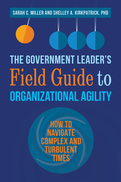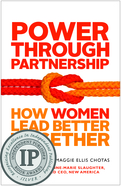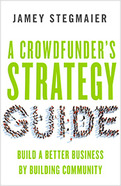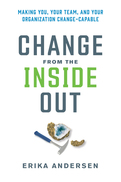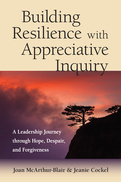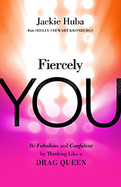Search Results: "Social Venture Networks"
Results 373-378 of 404
This is the first book to fully adapt the principles of agility for government leaders who want to make their organizations more effective and nimble while better serving their public mission.
This practical resource will equip government leaders at all levels with evidence-based, hands-on guidance for transforming their organizations, enabling them to better serve the public and their customers. While many books focus on organizational agility for leaders of for-profit companies, this is the first one tailored to the unique requirements government leaders face. They must find a way to accomplish their mission while navigating constant change.
Government leaders at all levels must maneuver their organizations through new, often complex challenges, ranging from new laws that impact their agencies, new technologies, changes in leadership, and unexpected events. By explaining how to manage and organize work differently, this guide will help leaders weather the storm of that constant change so they can help their agencies realize their missions and serve the public interest.
This practical resource will equip government leaders at all levels with evidence-based, hands-on guidance for transforming their organizations, enabling them to better serve the public and their customers. While many books focus on organizational agility for leaders of for-profit companies, this is the first one tailored to the unique requirements government leaders face. They must find a way to accomplish their mission while navigating constant change.
Government leaders at all levels must maneuver their organizations through new, often complex challenges, ranging from new laws that impact their agencies, new technologies, changes in leadership, and unexpected events. By explaining how to manage and organize work differently, this guide will help leaders weather the storm of that constant change so they can help their agencies realize their missions and serve the public interest.
WINNER OF THE 2015 SILVER MEDAL IPPY AWARD IN BUSINESS/CAREER/SALES.
Betsy Polk and Maggie Chotas have learned something powerful: when women work together they discover a level of support, flexibility, confidence, accountability, and freedom to be themselves that they rarely find in other work relationships. Drawing on their own twelve-year partnership and from interviews with 125 women business partners, Polk and Chotas demolish the myths that keep women from collaborating and offer advice for handling a host of potential challenges. This groundbreaking book shows that when women team up—combining complementary skills, channeling their egos into the partnership, and encouraging each other—they can work as full equals to achieve something that's exponentially greater than each woman alone.
Betsy Polk and Maggie Chotas have learned something powerful: when women work together they discover a level of support, flexibility, confidence, accountability, and freedom to be themselves that they rarely find in other work relationships. Drawing on their own twelve-year partnership and from interviews with 125 women business partners, Polk and Chotas demolish the myths that keep women from collaborating and offer advice for handling a host of potential challenges. This groundbreaking book shows that when women team up—combining complementary skills, channeling their egos into the partnership, and encouraging each other—they can work as full equals to achieve something that's exponentially greater than each woman alone.
More Than Money
Jamey Stegmaier knows crowdfunding. He's a veteran of seven successful Kickstarter campaigns (and counting) that have raised over $3.2 million, and he's the proprietor of the widely read Kickstarter Lessons blog. In this book he offers a comprehensive guide to crowdfunding, demonstrating that it can be a powerful way for entrepreneurs to grow their businesses by building community and putting their customers first.
This book includes over forty stories of inspiring successes and sobering disasters. Stegmaier uses these examples to demonstrate how to (and how not to) prepare for a campaign, grow a fan base, structure a pitch, find new backers, and execute many other crucially important “nuts and bolts” elements of a successful crowdfunding project.
But Stegmaier emphasizes that the benefits of crowdfunding are much more about the “crowd” than the “funding.” He shows that if you treat your backers as people, not pocketbooks—communicate regularly and transparently with them, ask their opinions, attend to their needs—they'll become advocates as well as funders, exponentially increasing your project's chances of succeeding.
Jamey Stegmaier knows crowdfunding. He's a veteran of seven successful Kickstarter campaigns (and counting) that have raised over $3.2 million, and he's the proprietor of the widely read Kickstarter Lessons blog. In this book he offers a comprehensive guide to crowdfunding, demonstrating that it can be a powerful way for entrepreneurs to grow their businesses by building community and putting their customers first.
This book includes over forty stories of inspiring successes and sobering disasters. Stegmaier uses these examples to demonstrate how to (and how not to) prepare for a campaign, grow a fan base, structure a pitch, find new backers, and execute many other crucially important “nuts and bolts” elements of a successful crowdfunding project.
But Stegmaier emphasizes that the benefits of crowdfunding are much more about the “crowd” than the “funding.” He shows that if you treat your backers as people, not pocketbooks—communicate regularly and transparently with them, ask their opinions, attend to their needs—they'll become advocates as well as funders, exponentially increasing your project's chances of succeeding.
Change initiatives fail because humans are hardwired to return to what's worked for us in the past. This book offers a straightforward process for rewiring ourselves and those we lead to be more change-capable.
Erika Andersen says avoiding change has been a historical imperative. In this book, she shows how we can overcome that reluctance and get good at making necessary change. Using a fictional story about a jewelry business changing generational hands, Andersen lays out a five-step model for addressing both this human side of change and its practical aspects:
Step 1: Clarify the change and why it's needed—Get clear on what the change is and the benefits it will bring.
Step 2: Envision the future state—Build a shared picture of the post-change future.
Step 3: Build the change—Bring together a change team, engage key stakeholders, and plan the change.
Step 4: Lead the transition—Build a transition plan that supports the human side of the change, then engage the whole organization in making the change.
Step 5: Keep the change going—Work to make your organization permanently more change-capable.
With opportunities to self-reflect and try out the ideas and approaches throughout, this book is a practical guide to thriving in this era of nonstop change.
Erika Andersen says avoiding change has been a historical imperative. In this book, she shows how we can overcome that reluctance and get good at making necessary change. Using a fictional story about a jewelry business changing generational hands, Andersen lays out a five-step model for addressing both this human side of change and its practical aspects:
Step 1: Clarify the change and why it's needed—Get clear on what the change is and the benefits it will bring.
Step 2: Envision the future state—Build a shared picture of the post-change future.
Step 3: Build the change—Bring together a change team, engage key stakeholders, and plan the change.
Step 4: Lead the transition—Build a transition plan that supports the human side of the change, then engage the whole organization in making the change.
Step 5: Keep the change going—Work to make your organization permanently more change-capable.
With opportunities to self-reflect and try out the ideas and approaches throughout, this book is a practical guide to thriving in this era of nonstop change.
Journey through hope, despair, and forgiveness
Leaders cannot predict the complex challenges they are called on to face. Veteran consultants Joan McArthur-Blair and Jeanie Cockell show that Appreciative Inquiry (AI) is an invaluable tool to build resilience.
AI is a widely used change approach that emphasizes identifying what's working well in a system. Leaders can use AI to increase their ability to weather the storms they'll inevitably encounter and be resilient. A profound guide, this book features personal accounts from leaders across a variety of settings describing how they've practiced appreciative resilience in the ongoing cycle of hope, despair, and forgiveness.
Leaders cannot predict the complex challenges they are called on to face. Veteran consultants Joan McArthur-Blair and Jeanie Cockell show that Appreciative Inquiry (AI) is an invaluable tool to build resilience.
AI is a widely used change approach that emphasizes identifying what's working well in a system. Leaders can use AI to increase their ability to weather the storms they'll inevitably encounter and be resilient. A profound guide, this book features personal accounts from leaders across a variety of settings describing how they've practiced appreciative resilience in the ongoing cycle of hope, despair, and forgiveness.
Fiercely You
2016
Work through your fears by getting fierce!
Fiercely You is a creative, playful approach to the serious problems that women face regarding confidence and risk taking. At a particularly low point in her life, bestselling author Jackie Huba serendipitously stumbled upon the wonderful world of drag queens and was inspired. They were supremely self-assured, utterly fearless, strong, powerful, and unabashedly and completely themselves. Jackie even became a drag queen herself: Lady Trinity. Drawing on her own experiences and interviews with the world's top drag queens, Huba and coauthor Shelly Kronbergs offers five Keys to Fierce that will help readers find the courage to ignore criticism and live the life they truly want to live every day—no wigs or stilettos required.
Fiercely You is a creative, playful approach to the serious problems that women face regarding confidence and risk taking. At a particularly low point in her life, bestselling author Jackie Huba serendipitously stumbled upon the wonderful world of drag queens and was inspired. They were supremely self-assured, utterly fearless, strong, powerful, and unabashedly and completely themselves. Jackie even became a drag queen herself: Lady Trinity. Drawing on her own experiences and interviews with the world's top drag queens, Huba and coauthor Shelly Kronbergs offers five Keys to Fierce that will help readers find the courage to ignore criticism and live the life they truly want to live every day—no wigs or stilettos required.


